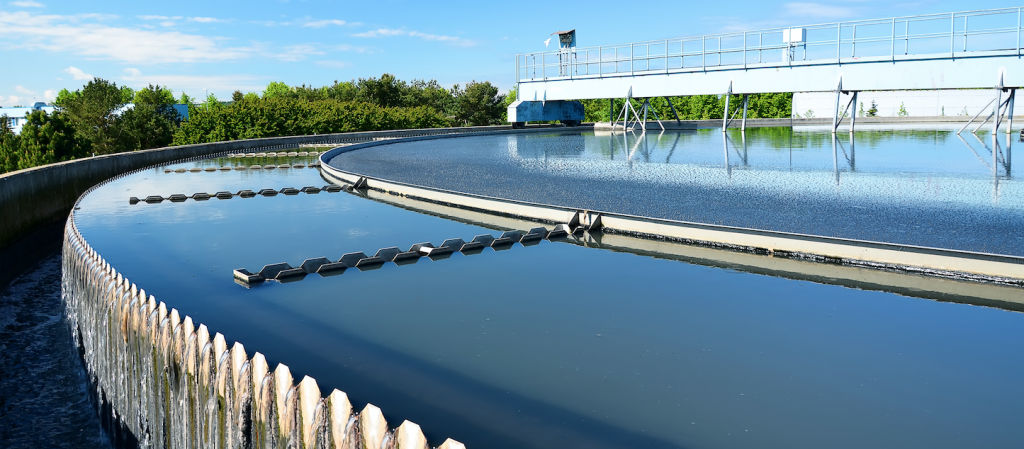Computational fluid dynamics, a key tool in moving towards sustainable water treatment
My path to the water industry has been somewhat unconventional, given my background in mechanical engineering. This path though has given me different perspectives about some of the research areas that I think are critically important. Computational fluid dynamics (CFD) is the area where I spend most of my working life, and I think it is poised to be a key tool in moving towards sustainable water treatment, especially in the development of treatment schemes with a lower energy footprint, and in the optimisation of water resource recovery processes. This is an underappreciated area in the water sector and more Young Water Professionals should consider learning about CFD, while CFD practitioners should apply their skills to the sector.
When I graduated with my PhD six years ago it had a focus on CFD modeling. My specialty though, was algorithm and code development, and I worked on applications including porous materials and heat transfer. A postdoctoral fellowship at the University of Waterloo, Canada, followed, where I interned as a code developer at ANSYS Inc. It was only two years later that an opportunity to engage with the water industry presented itself, as a CFD analyst at Trojan Technologies. Now that I’m back in as a faculty member at Western University, my research interests in water treatment have continued
I have a lot of choice in terms of the types of research problems that I study. While I am still heavily involved in CFD algorithm development work, I also maintain an active research program that focuses on applications of CFD modelling in the water sector. I’m not alone, other researchers are beginning to use CFD in water research, and there is potential to do much more.
The central theme of my research group is sustainability in water resource recovery and thermal energy management. In the water resource recovery part of my research, I currently have active projects in the areas of filtration, activated sludge, and photobioreactors. Effective treatment of wastewater is not only essential for protecting human health and the environment, but also has the potential to become an opportunity to recover valuable resources such as nutrients and energy. This has lead to a re-thinking of utilities from ‘wastewater treatment’ to ‘water resource recovery’ to address global issues such as water scarcity and energy production, as well as climate change.
In general, wastewater treatment is energy intensive, which has implications in terms of cost and environmental effects. Interestingly, fluid mechanics becomes a critical issue in many processes where mixing is important. Many existing process models consider only simplified hydrodynamics models, which may not be suitable for more advanced treatment schemes or during off-design operation. My research work strives to study the effects of hydrodynamics in more detail, most readily accomplished using CFD. As more advanced treatment processes are developed, the importance of understanding the hydrodynamics, and interactions with gas and solid phases, will only become more important.
One of the CFD projects that I am currently working on, involves modelling of photobioreactors (PBRs), one system that can be used in the context of the emerging water resource recovery philosophy known as ‘partition, release, and recover’. In this scheme, nutrients and organics are assimilated into biomass (partition) which are fed into anaerobic digesters for biogas production (release) and collection of nutrients (recovery). Biogas is used for energy production (while also mitigating greenhouse gas emissions) and nutrients are sold for applications such as fertilizers.
PBRs represent an ideal type of problem to be solved by CFD, since understanding the interactions between the process biokinetics and the flow and radiation (light) fields is critical for optimal performance. Since the mixed culture absorbs light, good mixing is essential to bring the phototrophic bacteria to the illuminated surfaces so they can receive energy for growth. My group, in collaboration with the University of Queensland, has developed a CFD model for PBRs that includes coupled flow, biokinetics, and radiation solvers. Such tools will be key to scaling-up and optimising PBR reactors, which will enable further resource recovery.
Over the next few years the use of CFD will increase and will become a more mainstream practice in the water industry. However, discussions with industry professionals and consultants seem to indicate that although they are interested in embracing CFD as a tool, they have concerns over the computational cost. It is critical that we work towards developing more computationally efficient tools that may be based on CFD, but do not necessarily require a full CFD simulation for every design condition. Compartmental models are one way that the detailed information from CFD simulations can be taken into account, but framed within the familiar process modelling frameworks that are used by all practitioners.
There are still many unanswered questions about how to implement this approach and about the suitability of this modelling approach. A major research question that needs to be addressed is how to simplify CFD models of these treatment processes, such that they can be used efficiently by practitioners. We haven’t yet scratched the surface of developing such models, and this is an area ripe for innovation in the years to come.
__________________________________________________________________
Chris DeGroot is Co-Chair and Programme Chair of the upcoming International Young Water Professionals Conference to be held 23-27 June 2019, Toronto, Canada. Chris is an assistant professor in the Department of Mechanical and Materials Engineering at Western University in London, Canada.


